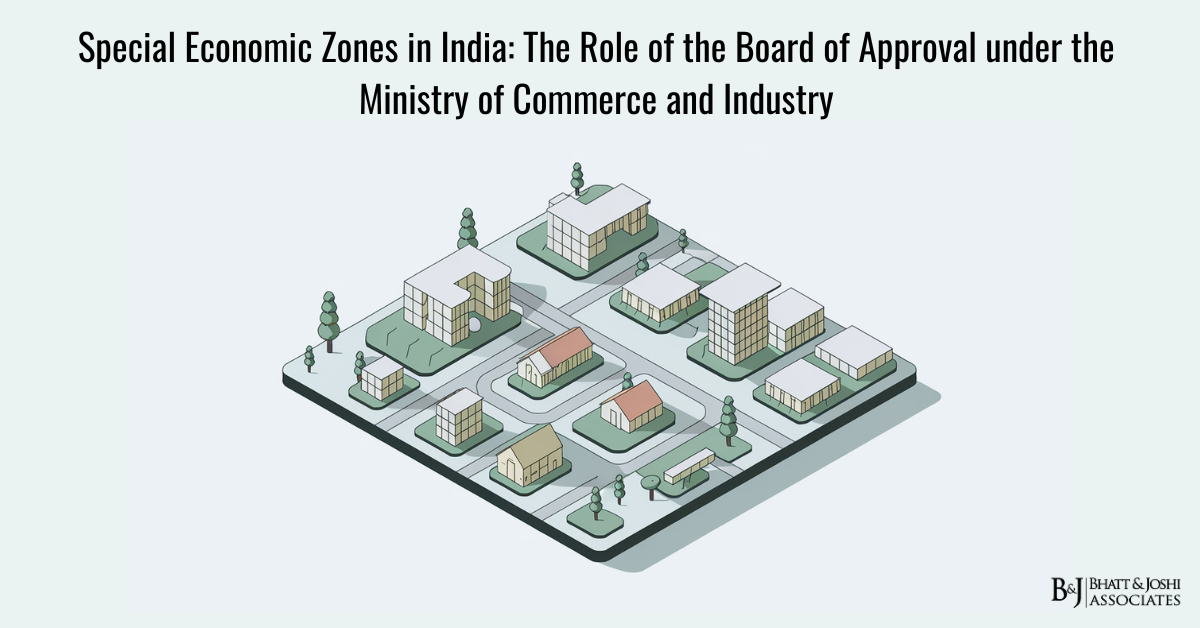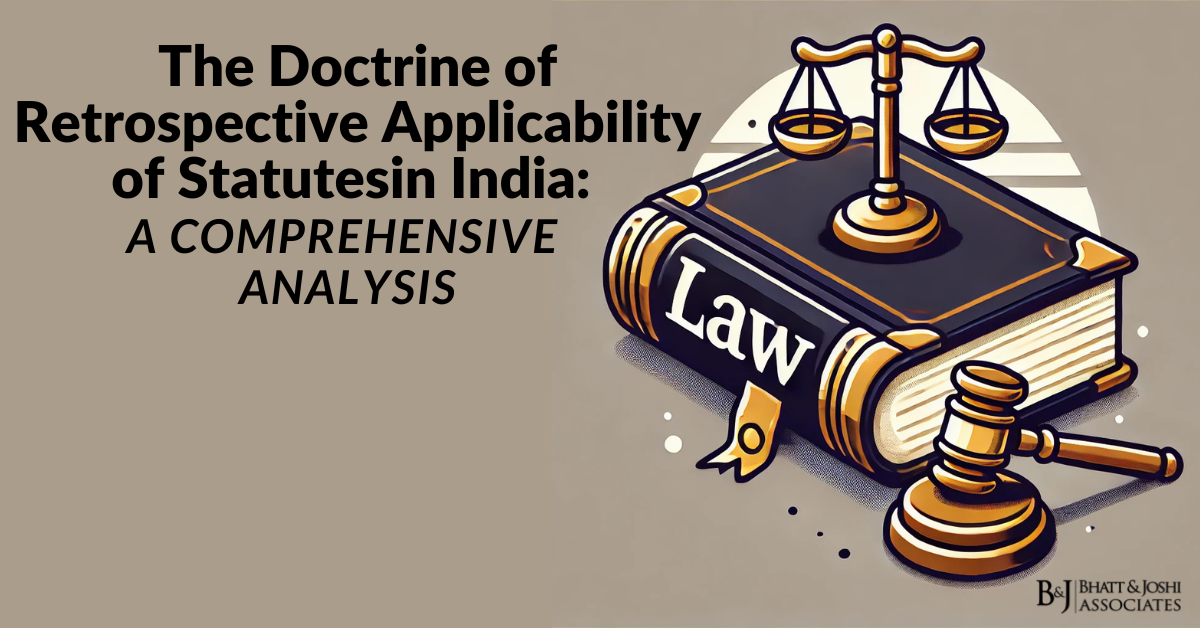Introduction
Special Economic Zones (SEZs) have emerged as a significant driver of India’s economic growth strategy, serving as catalysts for investment, employment generation, and export promotion. These designated areas, operating under specific regulatory frameworks, offer a range of fiscal and non-fiscal incentives to businesses, aimed at fostering a competitive and hassle-free environment for export-oriented activities. At the helm of India’s SEZ policy implementation is the Board of Approval (BoA) for SEZs, operating under the aegis of the Ministry of Commerce and Industry. This article delves into the multifaceted aspects of Special Economic Zones in India, exploring their historical context, the establishment and role of the Board of Approval, the regulatory framework governing SEZs, and the landmark policies and cases that have shaped the SEZ landscape in the country.
Historical Context and Evolution of Special Economic Zones in India
The concept of Special Economic Zones in India can be traced back to the establishment of Asia’s first Export Processing Zone (EPZ) in Kandla, Gujarat, in 1965. This initiative was aimed at promoting exports by offering a duty-free environment for export-oriented industries. Following the success of the Kandla EPZ, similar zones were established in various parts of the country over the next few decades.
However, the true transformation of India’s approach to special economic zones came in the wake of the economic liberalization of 1991. Recognizing the potential of SEZs in attracting foreign investment and boosting exports, the government began to explore a more comprehensive policy framework for these zones.
A significant milestone in this journey was the introduction of the Special Economic Zones Policy in April 2000. This policy aimed to make SEZs an engine for economic growth supported by quality infrastructure complemented by an attractive fiscal package, both at the Center and the State level, with the minimum possible regulations.
Building on this policy, the government enacted the Special Economic Zones Act in 2005, which came into effect on February 10, 2006. This Act provided the legal framework for the establishment, development, and management of SEZs in India. Simultaneously, the SEZ Rules, 2006 were framed to operationalize the provisions of the Act.
The SEZ Act, 2005 also provided for the establishment of the Board of Approval as the apex body for SEZ-related matters, marking a new era in the governance and promotion of SEZs in India.
The Board of Approval for SEZs: Establishment and Mandate
The Board of Approval for Special Economic Zones was established under Section 8 of the Special Economic Zones Act, 2005. The Act states:
“The Central Government shall, within fifteen days of the commencement of this Act, by notification, constitute, for the purposes of this Act, a Board to be called the Board of Approval.”
This provision underscores the statutory nature of the Board and its central role in the SEZ framework.
The composition of the Board, as outlined in Section 8(2) of the Act, ensures representation from various relevant ministries and departments:
“The Board shall consist of— (a) an officer not below the rank of an Additional Secretary to the Government of India in the Ministry or Department of the Central Government dealing with commerce — Chairperson, ex officio; (b) two officers, not below the rank of a Joint Secretary to the Government of India, to be nominated by the Central Government to represent the Ministry or Department of the Central Government dealing with revenue — Members, ex officio; (c) one officer not below the rank of a Joint Secretary to the Government of India to be nominated by the Central Government to represent the Ministry or Department of the Central Government dealing with economic affairs (financial services) — Member, ex officio; (d) such number of officers, not exceeding ten, not below the rank of the Joint Secretary to the Government of India, to be nominated by the Central Government to represent the Ministries or Departments of the Central Government dealing with commerce, industrial policy and promotion, science and technology, small scale industries and agro and rural industries, home affairs, defence, environment and forests, law, overseas Indian affairs and urban development — Members, ex officio; (e) a nominee of the State Government concerned — Member, ex officio; (f) the Director General of Foreign Trade or his nominee — Member, ex officio; (g) the Development Commissioner concerned — Member, ex officio; (h) a professor in the Indian Institute of Management, being a public financial institution, to be nominated by the Central Government — Member, ex officio; (i) an officer not below the rank of Deputy Secretary to the Government of India dealing with the Special Economic Zones in the Ministry or Department of the Central Government dealing with commerce — Member-Secretary, ex officio:”
This diverse composition ensures that the Board’s decisions are informed by a wide range of perspectives and expertise.
The primary functions of the Board of Approval, as detailed in Section 9 of the Act, include:
- Granting approval for establishment of Special Economic Zones
- Approving authorized operations to be carried out in a Special Economic Zone
- Granting approval for foreign collaborations and foreign direct investments in the Special Economic Zone
- Reviewing the performance of the Developer
These functions empower the Board to play a crucial role in shaping the development and operation of SEZs in India.
Regulatory Framework Governing Special Economic Zones in India
The regulatory framework governing Special Economic Zones in India is primarily based on the Special Economic Zones Act, 2005, and the SEZ Rules, 2006. This framework addresses various aspects of SEZ establishment, development, and operation, including approval procedures, fiscal incentives, and operational regulations.
Special Economic Zones Act, 2005
This Act provides the legal basis for the establishment, development, operation, and maintenance of SEZs in India. Section 3 of the Act empowers the Central Government to establish SEZs:
“The Central Government may, by notification in the Official Gazette, establish a Special Economic Zone, if it is satisfied that the establishment of such Zone is in the public interest.”
The Act also provides for the establishment of SEZs by private developers. Section 3(2) states:
“Any person who intends to set up a Special Economic Zone, may, after identifying the area, make a proposal to the State Government concerned for the purpose of setting up the Special Economic Zone.”
This provision has been instrumental in promoting private sector participation in SEZ development.
SEZ Rules, 2006
These rules provide detailed guidelines for the implementation of the SEZ Act. They cover various aspects such as procedures for establishing an SEZ, approval of authorized operations, and administration of SEZs.
Rule 3 of the SEZ Rules outlines the procedure for seeking approval for establishment of a Special Economic Zone:
“A proposal for setting up of Special Economic Zone shall be made in Form-A, in triplicate, to the Board through the concerned Development Commissioner along with prescribed fee as specified in rule 4.”
This rule ensures a standardized process for SEZ proposals, facilitating efficient review and approval by the Board.
Income Tax Act, 1961 (Section 10AA)
This section of the Income Tax Act provides for tax incentives to SEZ units. It states:
“Subject to the provisions of this section, in computing the total income of an assessee, being an entrepreneur as referred to in clause (j) of section 2 of the Special Economic Zones Act, 2005, from his Unit, who begins to manufacture or produce articles or things or provide any services during the previous year relevant to any assessment year commencing on or after the 1st day of April, 2006, a deduction of— (i) hundred per cent of profits and gains derived from the export, of such articles or things or from services for a period of five consecutive assessment years beginning with the assessment year relevant to the previous year in which the Unit begins to manufacture or produce such articles or things or provide services, as the case may be, and fifty per cent of such profits and gains for further five assessment years and thereafter; (ii) for the next five consecutive assessment years, so much of the amount not exceeding fifty per cent of the profit as is debited to the profit and loss account of the previous year in respect of which the deduction is to be allowed and credited to a reserve account (to be called the “Special Economic Zone Re-investment Reserve Account”) to be created and utilized for the purposes of the business of the assessee in the manner laid down in sub-section (2).”
This provision has been a key attraction for businesses to set up units in SEZs.
Key Case Law Shaping Special Economic Zones Laws in India
The interpretation and application of SEZ laws and policies in India have been significantly shaped by various landmark cases decided by the courts. Some of the notable cases include:
Dahej SEZ Ltd. vs. Union of India & Ors. (2015)
This case dealt with the issue of extending SEZ benefits to units located outside the processing area but within the SEZ. The Gujarat High Court held:
“The benefits under the SEZ Act are available only to units located within the processing area of the SEZ. Units located in the non-processing area, even if within the SEZ boundary, are not eligible for these benefits.”
This judgment provided clarity on the spatial applicability of SEZ benefits.
Essar Steel India Limited vs. Union of India (2016)
This case addressed the retrospective withdrawal of certain tax benefits to SEZ units. The Supreme Court observed:
“The promise of tax exemptions held out to SEZ units cannot be withdrawn with retrospective effect. Such withdrawal violates the principles of legitimate expectation and legal certainty, which are essential for promoting investment and economic growth.”
This judgment underscored the importance of policy stability in attracting and retaining investments in SEZs.
Yokogawa India Ltd. vs. Commissioner of Income Tax (2017)
This case dealt with the interpretation of export turnover for the purpose of calculating tax deductions for SEZ units. The Karnataka High Court held:
“For the purpose of calculating deductions under Section 10AA of the Income Tax Act, the term ‘export turnover’ should be interpreted to include the entire proceeds of sale of goods or services, including the freight, telecommunication charges, and insurance attributable to the delivery of such goods or services outside India.”
This judgment provided a favorable interpretation for SEZ units in calculating their tax benefits.
Recent Developments and Initiatives
In recent years, the SEZ landscape in India has witnessed several significant developments, many of which have been spearheaded or facilitated by the Board of Approval:
Introduction of Multi-Sector SEZs
Recognizing the need for flexibility in SEZ development, the government has been promoting multi-sector SEZs. In a press release, the Ministry of Commerce and Industry stated:
“Multi-sector SEZs provide developers with the flexibility to attract diverse industries, thereby enhancing the overall viability and attractiveness of the SEZ. This approach aligns with our vision of creating integrated industrial ecosystems.”
This initiative is expected to enhance the attractiveness of SEZs to a wider range of industries.
Focus on Services Sector SEZs
Recognizing India’s strengths in the services sector, there has been an increased focus on promoting services-oriented SEZs, particularly in areas like IT/ITES, financial services, and healthcare. The Board of Approval has been proactively considering proposals for such SEZs.
Simplification of Procedures
The government has been working on simplifying procedures for SEZ developers and units. In 2019, the Board of Approval introduced several ease of doing business measures, including online processing of various permissions and approvals.
Integration with National Single Window System
In 2021, the government announced the integration of the SEZ online system with the National Single Window System. The Commerce Secretary stated:
“This integration will bring all SEZ approvals and services on a single platform, significantly reducing the compliance burden for SEZ units and developers.”
This initiative is expected to enhance the ease of doing business in SEZs.
Challenges and Future Prospects of Special Economic Zones
Despite their success, Special Economic Zones in India face several challenges:
Land Acquisition Issues
Acquiring large tracts of land for SEZ development has been a contentious issue, often leading to social and political tensions.
Underutilization of SEZs
Many approved SEZs have remained undeveloped or underutilized, raising questions about their economic viability.
Global Competition
With many countries offering similar or more attractive incentives, Indian SEZs face stiff global competition in attracting investments.
Phasing Out of Direct Tax Benefits
The phasing out of direct tax benefits for new SEZ units from 2020 has raised concerns about the future attractiveness of SEZs.
To address these challenges and harness future opportunities, the Board of Approval and the government have been taking various steps:
Review of SEZ Policy
The government has constituted a committee to review the SEZ policy and suggest measures to make it more effective and aligned with global best practices.
Promotion of Coastal Economic Zones
There is a renewed focus on developing Coastal Economic Zones, leveraging India’s long coastline and maritime advantages.
Emphasis on Employment Generation
The Board of Approval has been emphasizing employment generation potential in evaluating SEZ proposals, aligning SEZ development with broader socio-economic objectives.
Exploring Convergence with Other Schemes
The government is exploring ways to integrate SEZs with other schemes like the Production Linked Incentive (PLI) scheme to enhance their attractiveness.
Conclusion
Special Economic Zones, under the oversight of the Board of Approval, have played a significant role in India’s economic growth story over the past two decades. From their inception as export promotion tools to their current avatar as integrated industrial ecosystems, SEZs have evolved in response to changing economic realities and policy priorities.
The Board of Approval has been instrumental in shaping this evolution, balancing the need for promoting investment and exports with broader socio-economic objectives. Through its decisions and policy recommendations, the Board has sought to enhance the effectiveness of SEZs as engines of economic growth and employment generation.
As India aspires to become a $5 trillion economy and increase its share in global trade, the role of SEZs becomes even more critical. The Board of Approval will need to continue adapting its approach to address emerging challenges and opportunities, particularly in areas like technology adoption, sustainability, and integration with global value chains.
The future of SEZs in India lies in their ability to evolve beyond mere tax havens into vibrant ecosystems of innovation, production, and services. This will require a reimagining of the SEZ concept, potentially involving greater integration with domestic markets, focus on emerging sectors like renewable energy and biotechnology, and emphasis on skill development and innovation.
The journey of Special Economic Zones in India is reflective of the country’s broader economic transformation – from a closed, centrally-planned economy to an increasingly open, market-oriented one. As new challenges emerge and opportunities unfold, the principles of SEZ development, guided by the Board of Approval, will continue to be a key element of India’s economic strategy, playing a crucial role in the country’s journey towards becoming a global economic powerhouse.
The success of SEZs in the coming years will depend not just on the policies and incentives offered, but also on their ability to create sustainable, inclusive, and innovative industrial ecosystems. The Board of Approval, with its diverse composition and statutory mandate, is well-positioned to steer SEZs towards this vision, ensuring that they remain relevant and impactful in India’s evolving economic landscape.














